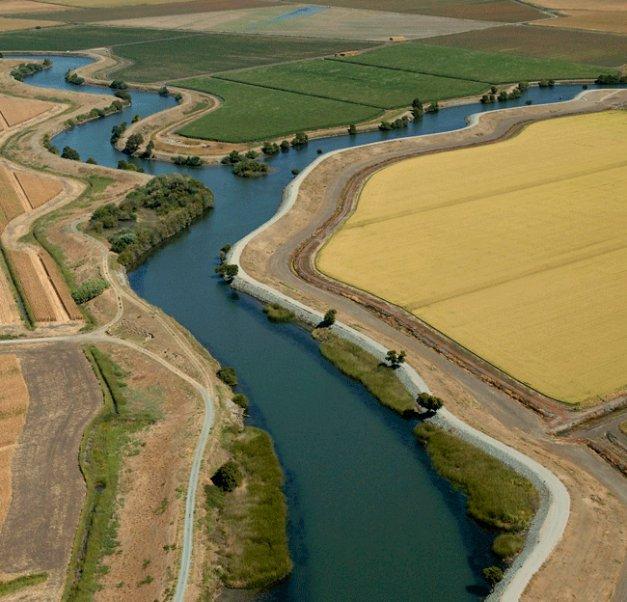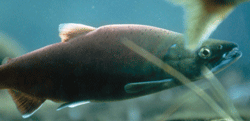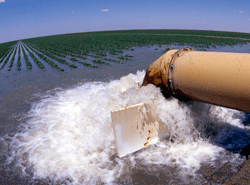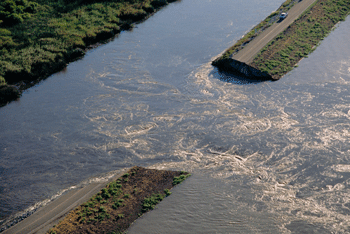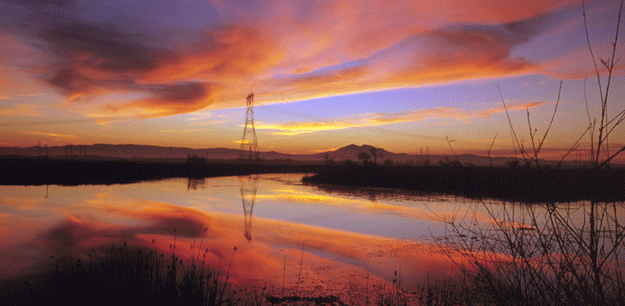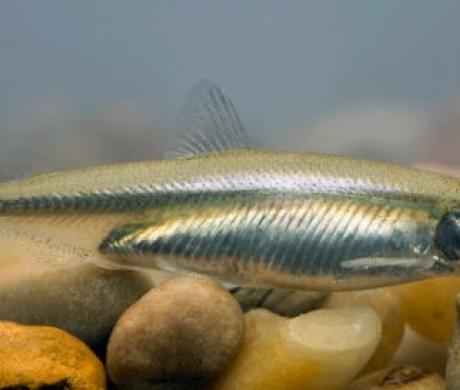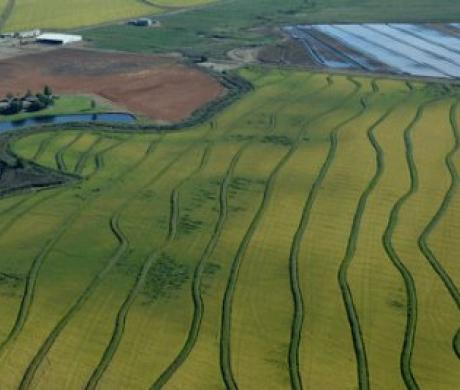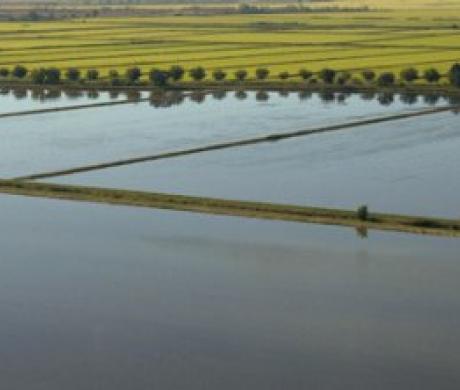The Bay Delta Conservation Plan: An Overview and Local Perspectives
Editor’s note: The controversial Bay Delta Conservation Plan is the recent subject of extensive attention and media coverage statewide. The views expressed in this article and its sidebars represent the authors’ opinions and not the policies or positions of the League.
Mark Cowin is director of the California Department of Water Resources and can be reached at Mark.Cowin@water.ca.gov.
For 60 years the biggest water projects in California have been drawing water out of the Sacramento-San Joaquin Delta for cities and farms. People have been talking for even longer about a better way to divert that water.
In a 1982 referendum that split the state, voters rejected a proposal to move the Delta’s main diversion point from its existing location in the south Delta near Tracy. Ever since, efforts to balance the needs of fish, farmers and cities for water from the Delta have been characterized as “water wars.” It’s an easy narrative: Water-rich north versus water-short south.
But nothing about the Delta is that simple, except this: It’s hard to overstate the Delta’s importance to California’s economy and natural heritage. The Delta supplies a large share of the water used in Southern California and the Santa Clara and San Joaquin valleys. California would not be the same without that water — hundreds of billions of dollars of economic activity a year depend upon it. Much of the fresh fruit, vegetables and nuts produced in the nation is grown with Delta water.
Similarly, the hundreds of miles of river channels that crisscross the Delta’s farmed islands provide a migratory pathway for Chinook salmon, which support an important West Coast fishing industry. Other native fish species depend upon the complex mix of fresh and salt water in the Delta estuary.
But the fish are in trouble. Some species reached historically low populations in recent years. Efforts to protect salmon and Delta smelt have reduced the volume of water delivered to farms and cities and made those supplies unpredictable. Furthermore, the current water delivery infrastructure in the Delta is vulnerable to catastrophic disruption.
Thirty Years of Knowledge: The Forces at Work
Since voters considered the idea of a “peripheral canal” to carry Sacramento River water around the Delta, we’ve gained 30 years’ worth of knowledge. We now know far more about how:
- The existing diversion system in the Delta does not work for native fish species;
- Seismic risks threaten the Delta water delivery system, which depends on vulnerable earthen levees; and
- Climate change is already raising sea levels, with more to come.
The specter of climate change also raises the likelihood of more intense storms and higher peak runoff surging through the Delta. If the levees break and Delta islands flood, salt water could be drawn inland, forcing the shutdown of water project pumps for weeks, months or years.
Climate change essentially nullifies the historical precipitation record we’ve relied on to predict the future. The Sierra Nevada snowpack that drains to the Delta is expected to shrink 25 percent or more in coming decades, with precipitation increasingly falling as winter rain, not snow. Protecting California from floods, meeting environmental water needs and capturing runoff for water supply will be complicated.
According to the Public Policy Institute of California, “Changes in the Delta are inevitable, given the unstoppable processes of sea level rise, land subsidence, earthquakes and a warming climate bringing larger floods.”
A New Plan
In the face of that inevitable change, state, federal and local leaders propose a new way to divert water from the Delta. The Bay Delta Conservation Plan (BDCP), seven years in the making, would prevent water delivery disruption by constructing three new screened intakes along the Sacramento River 35 miles north of the existing pumping plants. Twin tunnels buried up to 150 feet beneath the Delta’s peat soil would carry the water south, ensuring that water supplies could be delivered even if climate change and other forces resculpt the interior Delta.
This proposal would divert a total of 9,000 cubic feet per second as opposed to the 1982 proposal for intakes of 21,800 cubic feet per second and a 43-mile-longcanal through farmland. The earlier canal proposal assumed California would increase its reliance on the Delta for water supplies. The proposal being refined today does not guarantee bigger water deliveries. In fact, the 2009 Delta Reform Act passed by the California Legislature mandates reduced reliance on the Delta for future supplies.
Changing the way we divert water in the Delta cannot solve all of California’s water problems. It would not replace the need for regions to build their own self-sufficiency by investing heavily in water conservation, water-use efficiency, water recycling and use of groundwater basins. Similar investments are needed to create new water storage, whether in reservoirs or aquifers.
Regional efforts to stretch water supplies are unfolding throughout California, but they cannot offset entirely the loss of reliability associated with the Delta. For better or worse, California’s nearly $2 trillion economy depends to a great degree on moving Delta water hundreds of miles. Unpredictable water supplies put a large portion of California’s economy and population at risk.
A new Delta water conveyance system would safeguard the water delivery system. But the ecological imperative for such an improvement is as compelling as the economic reasons.
Ecological Considerations
The existing water project pumping plants draw from a dead-end channel in the south Delta. Even if fish here avoid getting sucked into the pumps, they have little hope of finding their way back to the Delta’s main channels and a great chance of being eaten by striped bass and other predators. To upgrade fish screens here would cost a lot of money and yield minimal benefit, as the fish would still have to be collected, put into tanks and trucked elsewhere in the Delta for release.
New intakes built on the main Sacramento River, however, could be fitted with low-velocity approach screens to shield even young salmon headed to the ocean. Once they pass the intakes, the fish would continue their journey up or down the river. Reducing reliance on the south Delta pumps would also allow for more natural east-west flows in the tidally influenced south Delta. That would minimize the extent to which reverse flows caused by pumping may draw migratory fish off course.
There’s another reason to build a northern diversion point: Threatened Delta smelt rarely venture so far north in the Sacramento River. Generally Delta smelt avoid the stretch of the river where the federal and state governments propose to build new intakes. In comparison, Delta smelt frequent the south Delta. Rules to protect the smelt frequently force shutdowns of the south Delta pumps.
For example, huge volumes of water from December 2012 storms could not be captured because of U.S. Endangered Species Act rules to protect Delta smelt and salmon. As a result, less water was captured to deliver to the San Francisco Bay Area, Southern California cities and San Joaquin Valley farms. Those regions are already dealing with reduced supplies due to dry weather in early 2013. New pumping plants outside the zone of prime Delta smelt habitat would have helped both fish and people this year.
But Delta smelt, salmon, sturgeon, sandhill cranes, Swainson’s hawks and dozens of other kinds of Delta wildlife need more than relocated pumping plants. They need the food and shelter a healthy Delta ecosystem would offer. Led by the California Natural Resources Agency, the U.S. Department of the Interior and the U.S. Department of Commerce, the agencies that seek to revamp the Delta’s plumbing system seek with equal vigor to reverse the Delta’s ecological decline. They propose to create at least 100,000 acres of tidal marsh, floodplain, riparian forest, grasslands and vernal pools that were largely eliminated in the 150-year-long human transformation of the Delta. Such habitat would serve not only to shelter fish and wildlife, but also to boost food production across the aquatic system. They also seek to address other stressors on the ecosystem, including non-native species, pollution and poaching.
Critics of the BDCP argue that we cannot restore an estuary by taking more water from it. Some call the plan a “water grab.”
In fact, the BDCP makes no promise of additional water deliveries from the Delta. Diversions may even decline. Pumping from the Delta would be governed by rules to protect fish and water quality and influenced by whether scientists can document progress toward the achievement of more than 200 biological goals and objectives spelled out in the plan. Examples include reducing the entrapment of fish at pumping plants, improving the survival rates of winter-run Chinook salmon as measured at two Delta islands and creating a viable migratory path for salmon through floodplains adjacent to the Sacramento River.
In the past 20 years, annual water diversions from the Delta by the federal and state water projects have averaged about 5.3 million acre-feet. We estimate that the amount of water that could be delivered once intakes of 9,000 cubic feet per second were built on the Sacramento River would range from approximately 4.8 million acre-feet to 5.6 million acre-feet per year. Whether deliveries end up on the high or low end of that range would depend on how protected species fare and whether research conducted over the coming decades shows that higher outflows in the spring and fall help Delta smelt and longfin smelt.
Critics of the BDCP also argue that a north Delta diversion would harm water quality downstream.
The BDCP is examining nine alternative ways to divert water from the Delta, with 15 different variations of conveyance structure and operational rules. The alternatives range from using existing Delta channels to building intakes capable of diverting 15,000 cubic feet per second. Regardless of which alternative is chosen, state and federal water project operators must:
- Meet downstream water quality standards;
- Allow sufficient flow down the Sacramento and San Joaquin rivers to repel salt water from San Francisco Bay so that water quality is not impaired for farms in the central and south Delta; and
- Meet those standards or risk penalties from the State Water Resources Control Board.
At the simplest level, the operating rules for any new intakes would tie diversions to the volume of flow in the Sacramento River, so that when flows are critically low, no water would be diverted. As flows increase, so could diversions, depending upon the presence of fish and other factors. Intakes of 9,000 cubic feet per second would allow the federal and state water projects to take a “big gulp” of winter storm flows, when pumping causes minimal ecological harm. If the intakes are too small, the existing south Delta pumping plants would remain the primary diversion, with all the attendant troubles for fish.
Examining the Cost
At a cost of roughly $25 billion over 50 years, the BDCP would not be cheap. Most construction, operation and maintenance costs — $14 billion — would be paid by the ratepayers of the water districts that buy water from the federal and state water projects. The general public would be expected to pay several billion dollars toward habitat restoration, most likely through future general obligation bonds.
A reasonable person might ask: Why should ratepayers make such a big investment for a project that may not increase water supplies at all?
Ultimately, the board of directors of each water agency must weigh the costs and potential benefits of the project and decide for themselves whether to commit to paying for the BDCP.
But the economic value of stabilizing the Delta’s ecosystem and water deliveries — as well as reducing the risk of catastrophic disruption — is at least as powerful an incentive as any potential increase in water supplies. Once water district managers know what they can reasonably expect in Delta deliveries, they can invest efficiently to meet local demand.
The Delta supply is not easily or cheaply replaced. Consider:
- Southern California, with half of the state’s population, gets almost a quarter of its average water supply from the Delta;
- Kern County, which produces nearly $3 billion annually in grapes, almonds, pistachios, milk, citrus and carrots, depends on the Delta for about a fifth of its irrigation supply;
- The west side of the San Joaquin Valley also produces billions of dollars’ worth of food and depends on the Delta for about three-quarters of its irrigation supply; and
- The San Francisco Bay Area, including the innovation hub of Silicon Valley, takes about half of its water supply from the Delta and its tributaries.
Economists at the California Department of Water Resources estimate that roughly 24 percent of California’s economic activity is connected to the water supplied by the federal and state water projects based in the Delta.
After 60 years of drawing water from the Delta, Californians recognize that the existing system does not work for fish or people. We have a chance to reverse environmental degradation and guard water supplies before climate change creates even more difficult conditions for our economy and native wildlife. Doing nothing will cost future Californians a lot more someday.
October Deadline for Draft Water Plan Documents
The State of California and the Obama Administration have set a formal deadline of Oct. 1, 2013, for the release of the draft Bay Delta Conservation Plan and accompanying environmental documents for public review and comment.
This article appears in the July 2013 issue of Western City
Did you like what you read here? Subscribe
to Western City

